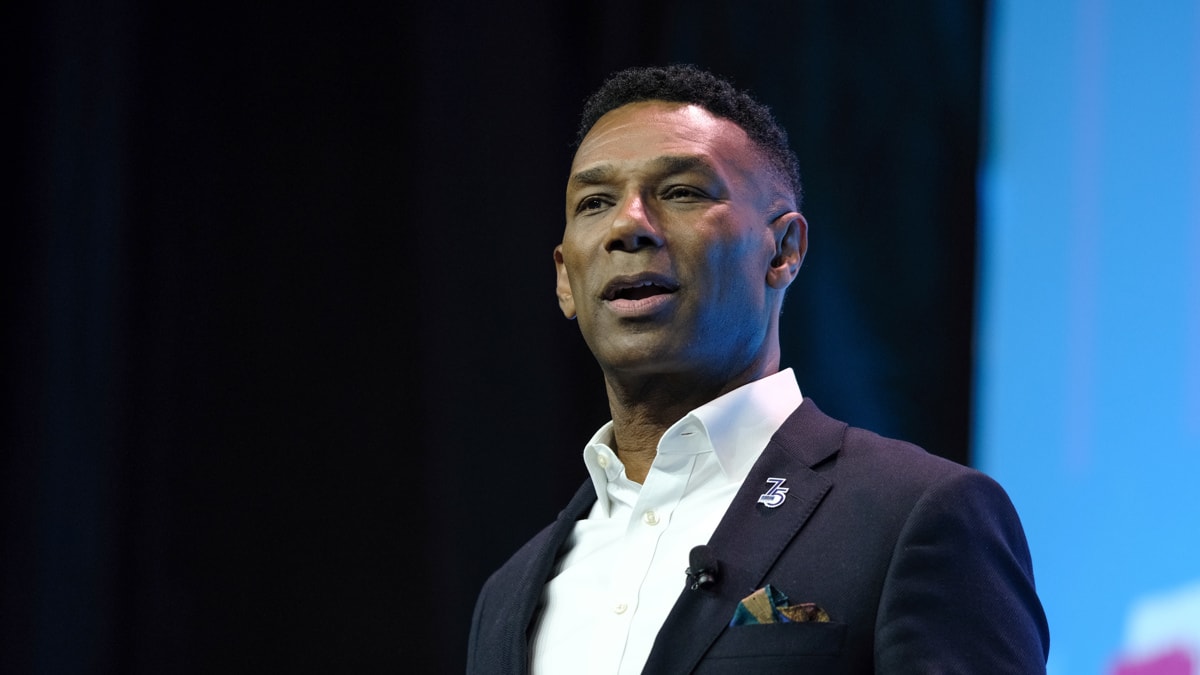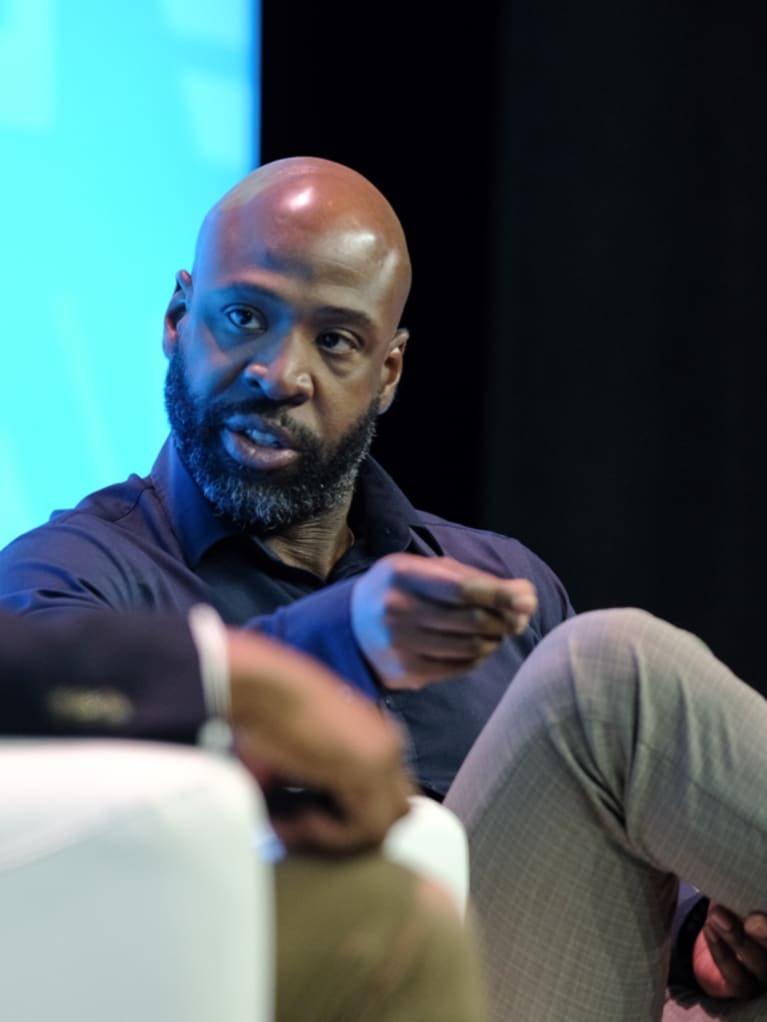
Inclusion, equity and diversity (IE&D) are on "an evolutionary track," SHRM President and Chief Executive Officer Johnny C. Taylor, Jr., SHRM-SCP, said Oct. 30 during the opening general session of the SHRM INCLUSION 2023 conference in Savannah, Ga.
And HR professionals have a unique opportunity "to help influence how [employees] treat their neighbor, how they see other people, hear other people," Taylor added.
He opened the talk, which included co-presenter Erec Smith, associate professor of rhetoric at York College of Pennsylvania, with a timeline of the evolution of diversity, inclusion and then equity in the workplace and the broader U.S.:
- 1960s: Legislation is passed, such as the Equal Pay Act of 1963, the Civil Rights Act of 1964 and the Age Discrimination in Employment Act of 1967. People beging talking about affirmative action and what it means.
- Early 2000s: The concept of inclusion is introduced. "It wasn't enough to have diverse workforces; we needed to ensure people felt included," as well, Taylor said.
- 2015-2020: Equity enters the conversation, starting with a focus on gender pay equity.
"Women were coming to work in meaningful numbers, and [equity] was a conversation that needed to happen," Taylor said. - 2020-present: The concepts of belonging and accessibility enter the conversation.
On May 25, 2020, the "horrible, horrific murder" of George Floyd by a Minneapolis police officer was a jarring reminder of the ugly existence of injustice, racism and discrimination. It ushered in a new discussion, Taylor said, that questioned "how much progress we actually have made."
Job openings for inclusion and diversity experts suddenly surged after nationwide protests over Floyd's death. Organizations signed pledges committing to do more around IE&D.
But three years later, the tone has changed, he said, noting news headlines like "Hiring for Diversity Officers Stalls 2 Years After Big Promises," "DEI Is Failing Because It 'Promotes Division Instead of Unity': DEI Pro," and "Hamstrung by 'Golden Handcuffs': Diversity Roles Disappear 3 Years After George Floyd's Murder Inspired Them."
Then came the U.S. Supreme Court decision in June that struck down affirmative action programs at the University of North Carolina and Harvard and left employers wondering how that decision might also affect them.
SHRM issued a statement of support for HR professionals in higher education as they worked to comply with the ruling "and develop innovative approaches to build better workplaces for an increasingly diverse workforce."
And while the Supreme Court decision was directed at academia, Taylor told conference attendees, it is a cause for introspection across workplaces. Surveys have shown, for example, that anti-bias training is not effective, he said.
"All of us have biases. How can we get past that?" he asked Smith, whose primary work focuses on the rhetoric of anti-racist activism, theory and pedagogy.
Smith also is co-founder of Free Black Thought, a Los Angeles-based nonprofit that describes itself as a small group of scholars, technologists, parents and Americans who aim to amplify Black voices "from left, right and center."
"It's not working because you can think one way and act a different way," Smith said.
Foundational work has to be done on how people see the world. Smith said that some of the most racist people he knows have the least interaction with or knowledge of the people they are biased against.
He also noted that many IE&D initiatives "go straight to 'How can we all get along?' We're focused too much on how we talk to other people" and justifying how we think and look at the world.
"You have to get deeper than that. We're skipping talking to ourselves" and being introspective, Smith said.
He recommended using adaptive leadership, which he said gets into people's attitudes, beliefs and values, which are difficult to change.
"If you instill something into a corporation but the values and beliefs necessary to uphold those things aren't there," the initiative won't take hold, Smith said. "You have to … work on the values, the beliefs and attitudes, the expectations of certain people in certain positions, how they're supposed to listen. All these things need to change," along with recognizing that a one-size-fits-all approach does not work.
Advertisement
An organization run by AI is not a futuristic concept. Such technology is already a part of many workplaces and will continue to shape the labor market and HR. Here's how employers and employees can successfully manage generative AI and other AI-powered systems.
Advertisement


